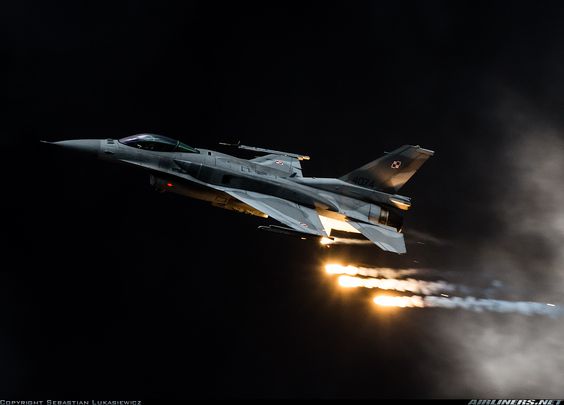4 factors that made the F-16 generations ahead of their time
The F-16 Fighting Falcon was initially intended to be a daytime air superiority fighter, but it has developed into an all-weather multi-role assault aircraft throughout the course of its service life. The first F-16 went off the assembly line in 1976, and over 4,500 aircraft followed.

The Fighting Falcon (dubbed the “Viper” in aggressor squadron circles) remains technologically modern and lethal over its entire mission spectrum, which is impressive given that the renowned Col. John Boyd and his “fighter mafia” initially conceived of the plane in the late 1960s.
Here are four design elements that were years ahead of their time when they initially appeared on the fleet and continue to be so today:
1. Fly-by-wire flight controls and side-stick controller
The F-16 was meant to be aerodynamically unstable until it achieves supersonic airspeeds, unlike any other aircraft that had been created before it. Because of this, there is no mechanical connection between the stick and the airplane’s moving parts. To understand pilot inputs and adjust the flight controls accordingly, a “fly-by-wire” computer interface is needed. The stick is situated to the side of the cockpit rather than in the middle because the F-16 is made for high-G loading, which is better for the pilot’s right arm. It hardly moves at all; the full throw is only 1/8 of an inch.
2. Bubble canopy
In the F-16, the pilot is seated unusually high in relation to the canopy rail, which improves his visibility across the cockpit, especially at six o’clock. The bubble canopy is intended to highlight this characteristic, and rookie pilots often report feeling first disoriented within the aircraft. In contrast to other fighters, there is no canopy bow in front of the pilot, leaving the forward vision entirely clear. The end product is a fighter that offers pilots a competitive edge in dogfighting situations when “losing sight equals losing war.”
3. Reclined ejection seat
The ejection seat of the F-16 is slanted 30 degrees back (compared to roughly 12 degrees on other ejection seat aircraft) for the pilot’s better G tolerance because the F-16 is designed to pull 9 Gs or more (compared to 6.5 for most other American fighters). While shooting down MiGs and other bad guys, pilots sit nearly like they’re riding a reclining bicycle with their knees up, which provides for a really pleasant ride.
4. Multi-function displays
One of the first military aircraft with a “glass” cockpit as opposed to the traditional “steam gauges” was the F-16, which enables a pilot to customise his displays for both a specific mission and personal choice. MFDs also make it simple to upgrade software, which has allowed the Fighting Falcon stay combat-relevant for a long time.








